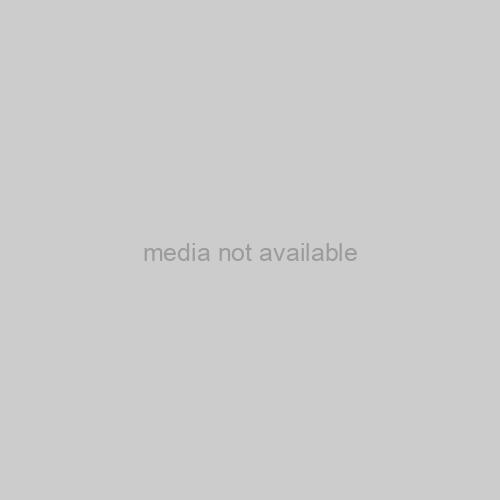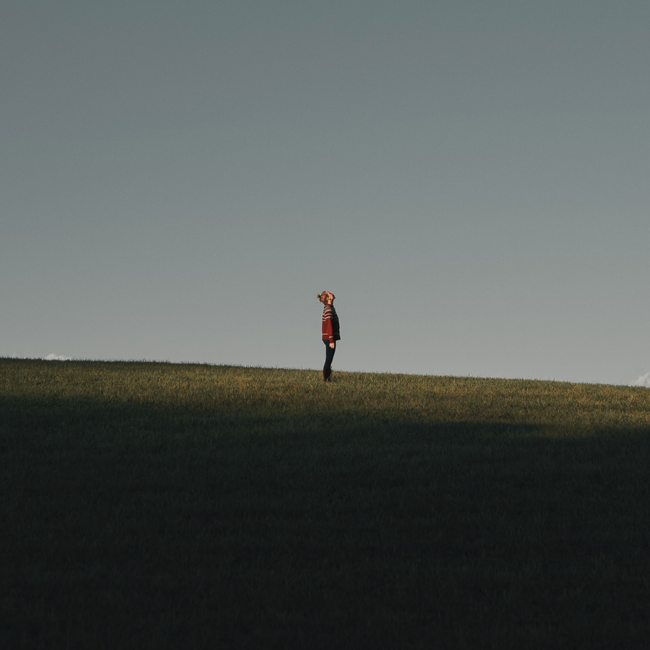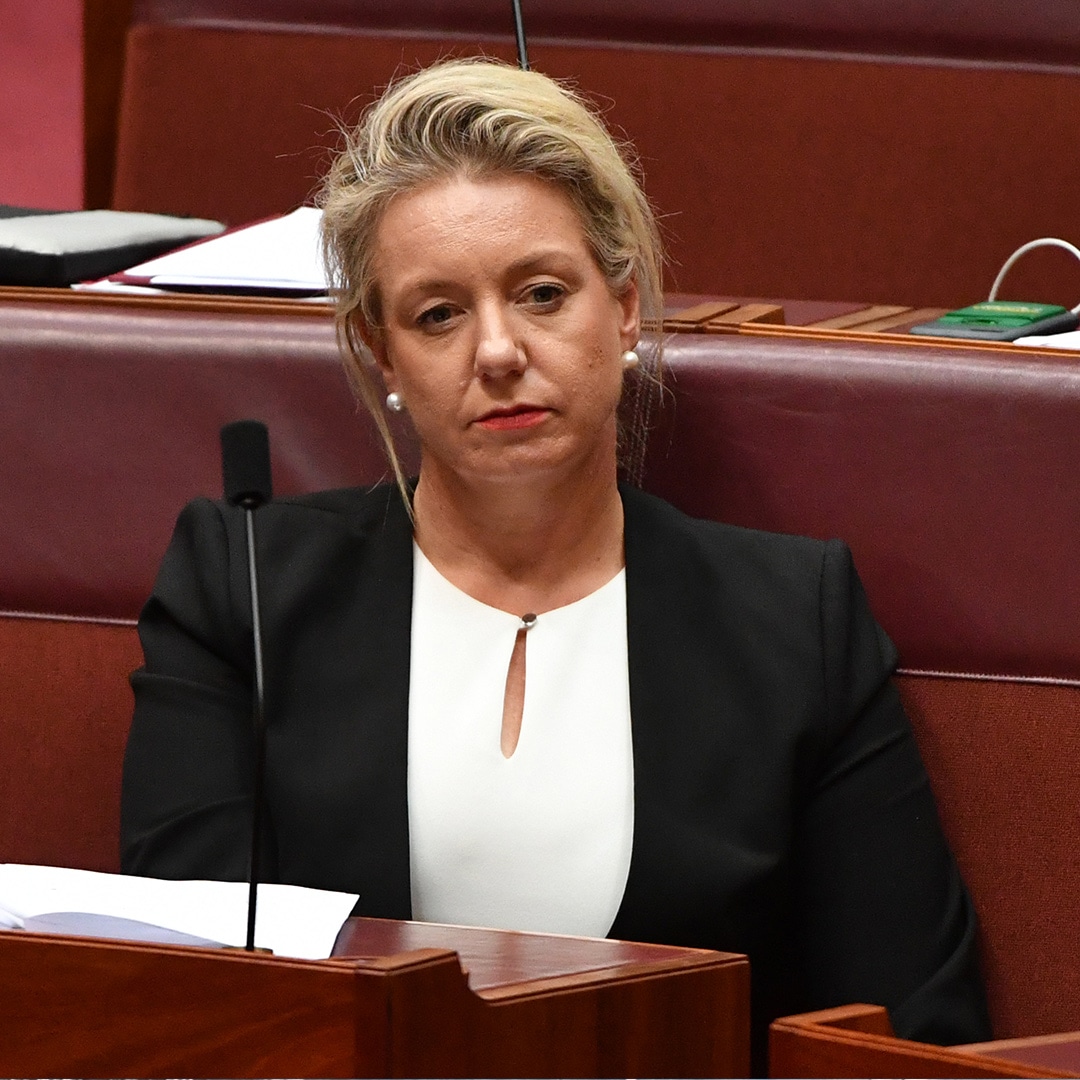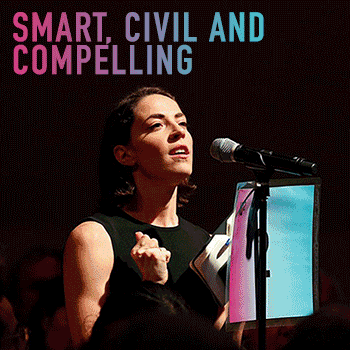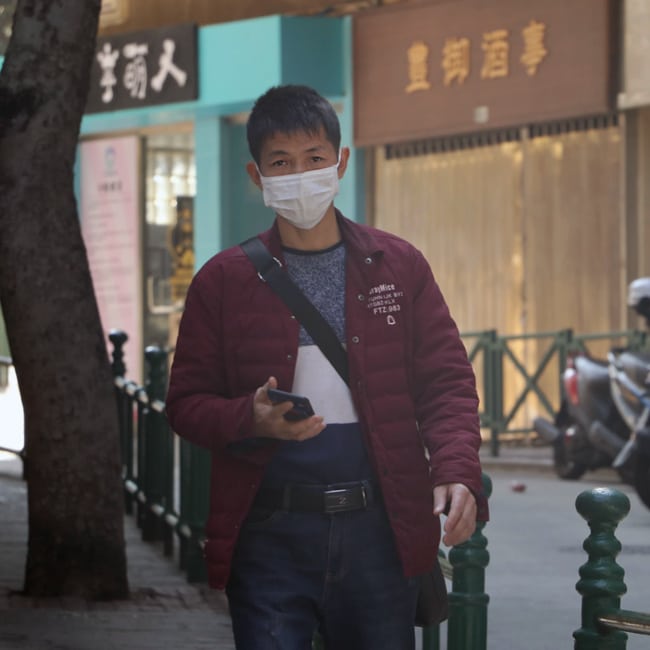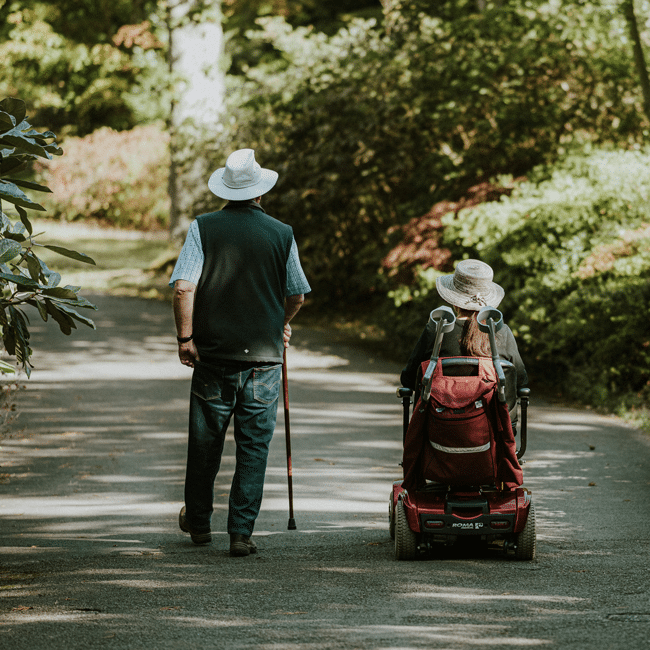Ethics Explainer: The Harm Principle

Ethics Explainer: The Harm Principle
ExplainerPolitics + Human RightsRelationships
BY The Ethics Centre 27 OCT 2016
The harm principle says people should be free to act however they wish unless their actions cause harm to somebody else.
The principle is a central tenet of the political philosophy known as liberalism and was first proposed by English philosopher John Stuart Mill.
The harm principle is not designed to guide the actions of individuals but to restrict the scope of criminal law and government restrictions of personal liberty.
For Mill – and the many politicians, philosophers and legal theorists who have agreed with him – social disapproval or dislike (“mere offence”) for a person’s actions isn’t enough to justify intervention by government unless they actually harm or pose a significant threat to someone.
The phrase “Your freedom to swing your fist ends where my nose begins” captures the general sentiment of the principle, which is why it’s usually linked to the idea of “negative rights”. These are demands someone not do something to you. For example, we have a negative right to not be assaulted.
On the other hand, “positive rights” demand that others do certain things for us, like provide healthcare or treat us with basic respect. For this reason, the principle is often used in political debates to discuss the limitations of state power.
There’s no issue with actions that are harmful to the individual themselves. If you want to smoke, drink, or use drugs to excess, you should be free to do so. But if you get behind the wheel of a car while under the influence, pass second-hand smoke onto other people, or become violent on certain drugs, then there’s good reason for the government to get involved.
Attempting to define harm
The sticking point comes in trying to define what counts as harmful. Although it might seem obvious, it’s actually not that easy. For example, if you benefit by winning a promotion at work while other applicants lose out, does this count as being harmful to them?
Mill would argue no. He defines harms as wrongful setbacks to interests to which people have rights. He would argue you wouldn’t be harming anyone by winning a promotion because although their interests are set back, no particular person has a right to a promotion. If it’s earned on merit, then it’s fair. “May the best person win”, so to say.
A more difficult category concerns harmful speech. For Mill, you do not have the right to incite violence – this is obviously harmful as it physically hurts and injures. However, he says you do have the right to offend other people – having your feelings hurt doesn’t count as harm.
Recent debates have questioned this and claim that certain kinds of speech can be as damaging psychologically as a physical attack – either because they’re personally insulting or because they entrench established power dynamics and oppress minorities.
Importantly, Mill believed the harm principle only applied to people who are able to exercise their freedom responsibly. For instance, paternalism over children was acceptable since children are not fully capable of responsibly exercising freedom, but paternalism over fully autonomous adults was not.
Unfortunately, he also thought these measures were appropriate to use against “barbarians”, by which he meant non-Europeans in British colonies like India.
This highlights an important point about the harm principle: the basis for determining who is worthy or capable of exercising their freedom can be subject to personal, cultural or political bias. When making decisions about rights and responsibilities, we should be ever careful about the potential biases that inform who or what we apply them to.
Ethics in your inbox.
Get the latest inspiration, intelligence, events & more.
By signing up you agree to our privacy policy
You might be interested in…
Opinion + Analysis
Relationships
Is existentialism due for a comeback?
Opinion + Analysis
Relationships, Society + Culture
Meet Daniel, helping us take ethics to the next generation
Opinion + Analysis
Politics + Human Rights
McKenzie… a fractured cog in a broken wheel
Opinion + Analysis
Business + Leadership, Relationships
What makes a business honest and trustworthy?
BY The Ethics Centre
The Ethics Centre is a not-for-profit organisation developing innovative programs, services and experiences, designed to bring ethics to the centre of professional and personal life.
Ethics Explainer: Ethics, morality & law

Ethics Explainer: Ethics, morality & law
ExplainerPolitics + Human Rights
BY The Ethics Centre 27 SEP 2016
Some people talk about their personal ethics, others talk about a set of morals, and everyone in a society is governed by the same set of laws. They can be easy to conflate.
Knowing the difference and relationship between them is important though, because they can conflict with one another. If the law conflicts with our personal values or a moral system, we have to act – but to do so we need to be able to tell the difference between them.
Ethics
Ethics is a branch of philosophy that aims to answer the basic question, “What should I do?” It’s a process of reflection in which people’s decisions are shaped by their values, principles, and purpose rather than unthinking habits, social conventions, or self-interest.
Our values, principles, and purpose are what give us a sense of what’s good, right, and meaningful in our lives. They serve as a reference point for all the possible courses of action we could choose. On this definition, an ethical decision is one made based on reflection about the things we think are important and that is consistent with those beliefs.
While each person is able to reflect and discover their own sense of what’s good, right, and meaningful, the course of human history has seen different groups unify around different sets of values, purposes and principles. Christians, consequentialists, Buddhists, Stoics and the rest all provide different answers to that question, “What should I do?” Each of these answers is a ‘morality’.
Morality
Many people find morality extremely useful. Not everyone has the time and training to reflect on the kind of life they want to live, considering all the different combinations of values, principles, and purposes. It’s helpful for them to have a coherent, consistent account that has been refined through history and can be applied in their day to day lives.
Many people also inherit their morality from their family, community or culture – it’s rare for somebody to ‘shop around’ for the morality that most closely fits their personal beliefs. Usually the process is unconscious. There’s a challenge here: if we inherit a ready-made answer to the question of how we should live, it’s possible to apply it to our lives without ever assessing whether the answer is satisfactory or not.
We might live our whole lives under a moral system which, if we’d had the chance to think about, we would have rejected in part or in full.
Law
The law is different. It’s not a morality in the strict sense of the word because, at least in democratic nations, it tries to create a private space where individuals can live according to their own ethical beliefs or morality. Instead, the law tries to create a basic, enforceable standard of behaviour necessary in order for a community to succeed and in which all people are treated equally.
Because of this, the law is narrower in focus than ethics or morality. There are some matters the law will be agnostic on but which ethics and morality have a lot to say. For example, the law will be useless to you if you’re trying to decide whether to tell your competitor their new client has a reputation for not paying their invoices, but our ideas about what’s good and right will still guide our judgement here.
There is a temptation to see the law and ethics as the same – so long as we’re fulfilling our legal obligations we can consider ourselves ‘ethical’. This is mistaken on two fronts. First, the law outlines a basic standard of behaviour necessary for our social institutions to keep functioning. For example, it protects basic consumer rights. However, in certain situations the right thing to in solving a dispute with a customer might require us to go beyond our legal obligations.
Secondly, there may be times when obeying the law would require us to act against our ethics or morality. A doctor might be obligated to perform a procedure they believe is unethical or a public servant might believe it’s their duty to leak classified information to the press. Some philosophers have argued that a person’s conscience is more binding on them than any law, which suggests to the letter of the law won’t be an adequate substitute for ethical reflection.
Ethics in your inbox.
Get the latest inspiration, intelligence, events & more.
By signing up you agree to our privacy policy
You might be interested in…
Opinion + Analysis
Health + Wellbeing, Politics + Human Rights
Vaccines: compulsory or conditional?
Opinion + Analysis
Politics + Human Rights, Society + Culture
Making sense of our moral politics
Big thinker
Health + Wellbeing, Politics + Human Rights
Big Thinkers: Thomas Beauchamp & James Childress
Opinion + Analysis
Health + Wellbeing, Politics + Human Rights
Feminist porn stars debunked
BY The Ethics Centre
The Ethics Centre is a not-for-profit organisation developing innovative programs, services and experiences, designed to bring ethics to the centre of professional and personal life.
Ethics Explainer: Social Contract
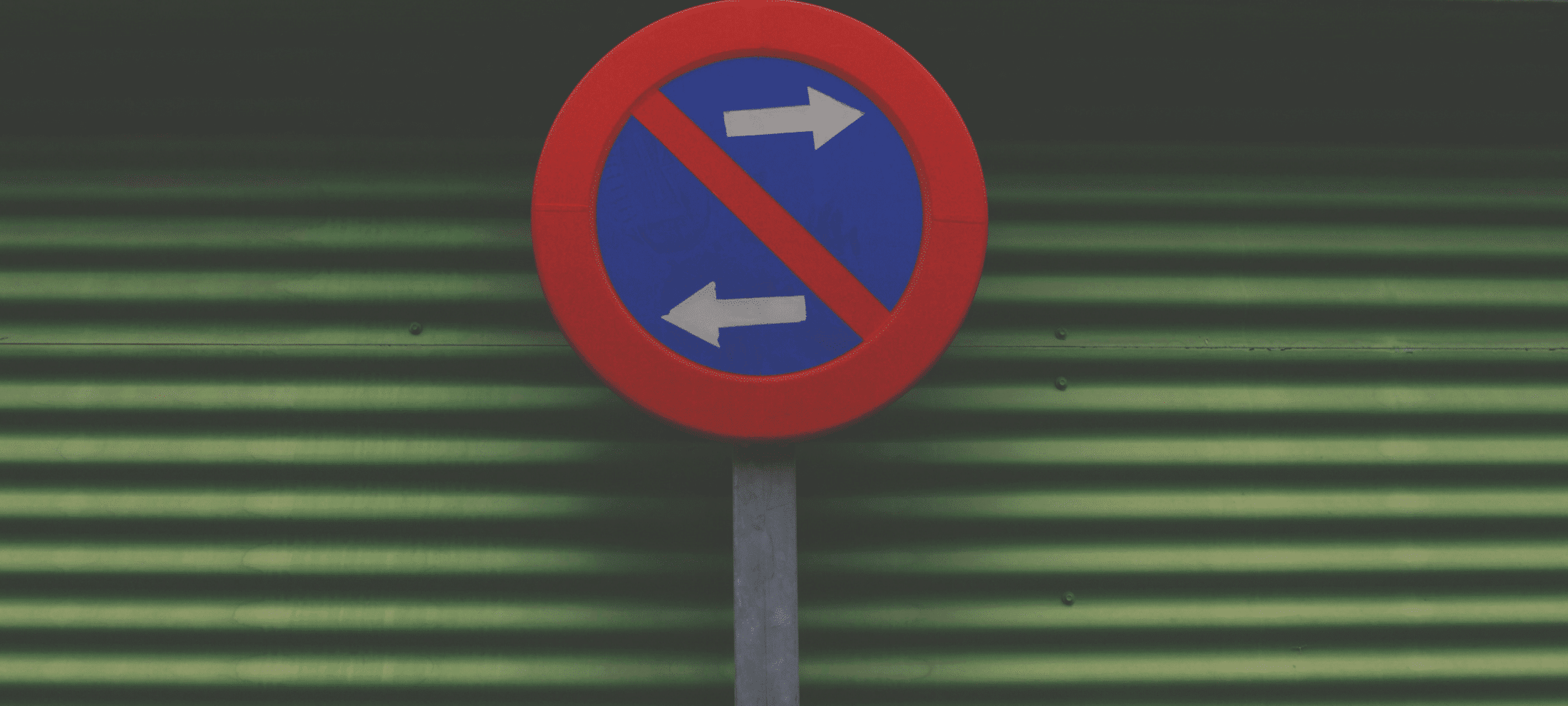
Social contract theories see the relationship of power between state and citizen as a consensual exchange. It is legitimate only if given freely to the state by its citizens and explains why the state has duties to its citizens and vice versa.
Although the idea of a social contract goes as far back as Epicurus and Socrates, it gained popularity during The Enlightenment thanks to Thomas Hobbes, John Locke and Jean-Jacques Rousseau. Today the most popular example of social contract theory comes from John Rawls.
The social contract begins with the idea of a state of nature – the way human beings would exist in the world if they weren’t part of a society. Philosopher Thomas Hobbes believed that because people are fundamentally selfish, life in the state of nature would be “nasty, brutish and short”. The powerful would impose their will on the weak and nobody could feel certain their natural rights to life and freedom would be respected.
Hobbes believed no person in the state of nature was so strong they could be free from fear of another person and no person was so weak they could not present a threat. Because of this, he suggested it would make sense for everyone to submit to a common set of rules and surrender some of their rights to create an all-powerful state that could guarantee and protect every person’s right. Hobbes called it the ‘Leviathan’.
It’s called a contract because it involves an exchange of services. Citizens surrender some of their personal power and liberty. In return the state provides security and the guarantee that civil liberty will be protected.
Crucially, social contract theorists insist the entire legitimacy of a government is based in the reciprocal social contract. They are legitimate because they are the only ones the people willingly hand power to. Locke called this popular sovereignty.
Unlike Hobbes, Locke thought the focus on consent and individual rights meant if a group of people didn’t agree with significant decisions of a ruling government then they should be allowed to join together to form a different social contract and create a different government.
Not every social contract theorist agrees on this point. Philosophers have different ideas on whether the social contract is real, or if it’s a fictional way to describe the relationship between citizens and their government.
If the social contract is a real contract – just like your employment contract – people could be free not to accept the terms. If a person didn’t agree they should give some of their income to the state they should be able to decline to pay tax and as a result, opt out of state-funded hospitals, education, and all the rest.
Like other contracts, withdrawing comes with penalties – so citizens who decide to stop paying taxes may still be subject to punishment.
Other problems arise when the social contract is looked at through a feminist perspective. Historically, social contract theories, like the ones proposed by Hobbes and Locke, say that (legitimate) state authority comes from the consent of free and equal citizens.
Philosophers like Carole Pateman challenge this idea by noting that it fails to deal with the foundation of male domination that these theories rest on.
For Pateman the myth of autonomous, free and equal individual citizens is just that: a myth. It obscures the reality of the systemic subordination of women and others.
In Pateman’s words the social contract is first and foremost a ‘sexual contract’ that keeps women in a subordinate role. The structural subordination of women that props up the classic social contract theory is inherently unjust.
The inherent injustice of social contract theory is further highlighted by those critics that believe individual citizens are forced to opt in to the social contract. Instead of being given a choice, they are just lumped together in a political system which they, as individuals, have little chance to control.
Of course, the idea of individuals choosing not to opt in or out is pretty impractical – imagine trying to stop someone from using roads or footpaths because they didn’t pay tax.
To address the inherent inequity in some forms of social contract theory, John Rawls proposes a hypothetical social contract based on fundamental principles of justice. The principles are designed to provide a clear rationale to guide people in choosing to willingly agree to surrender some individual freedoms in exchange for having some rights protected. Rawls’ answer to this question is a thought experiment he calls the veil of ignorance.
By imagining we are behind a veil of ignorance with no knowledge of our own personal circumstances, we can better judge what is fair for all. If we do so with a principle in place that would strive for liberty for all at no one else’s expense, along with a principle of difference (the difference principle) that guarantees equal opportunity for all, as a society we would have a more just foundation for individuals to agree to a contract that in which some liberties would be willingly foregone.
Out of Rawls’ focus on fairness within social contract theory comes more feminist approaches, like that of Jean Hampton. In addition to criticising Hobbes’ theory, Hampton offers another feminist perspective that focuses on extending the effects of the social contract to interpersonal relationships.
In established states, it can be easy to forget the social contract involves the provision of protection in exchange for us surrendering some freedoms. People can grow accustomed to having their rights protected and forget about the liberty they are required to surrender in exchange.
Whether you think the contract is real or just a useful metaphor, social contract theory offers many unique insights into the way citizens interact with government and each other.
Ethics in your inbox.
Get the latest inspiration, intelligence, events & more.
By signing up you agree to our privacy policy
You might be interested in…
Explainer
Politics + Human Rights, Relationships
Ethics Explainer: The Harm Principle
Explainer
Business + Leadership, Politics + Human Rights
Ethics Explainer: Universal Basic Income
Opinion + Analysis
Climate + Environment, Politics + Human Rights, Relationships
A burning question about the bushfires
Opinion + Analysis
Health + Wellbeing, Politics + Human Rights, Relationships
CoronaVirus reveals our sinophobic underbelly
BY The Ethics Centre
The Ethics Centre is a not-for-profit organisation developing innovative programs, services and experiences, designed to bring ethics to the centre of professional and personal life.
Don’t throw the birth plan out with the birth water!
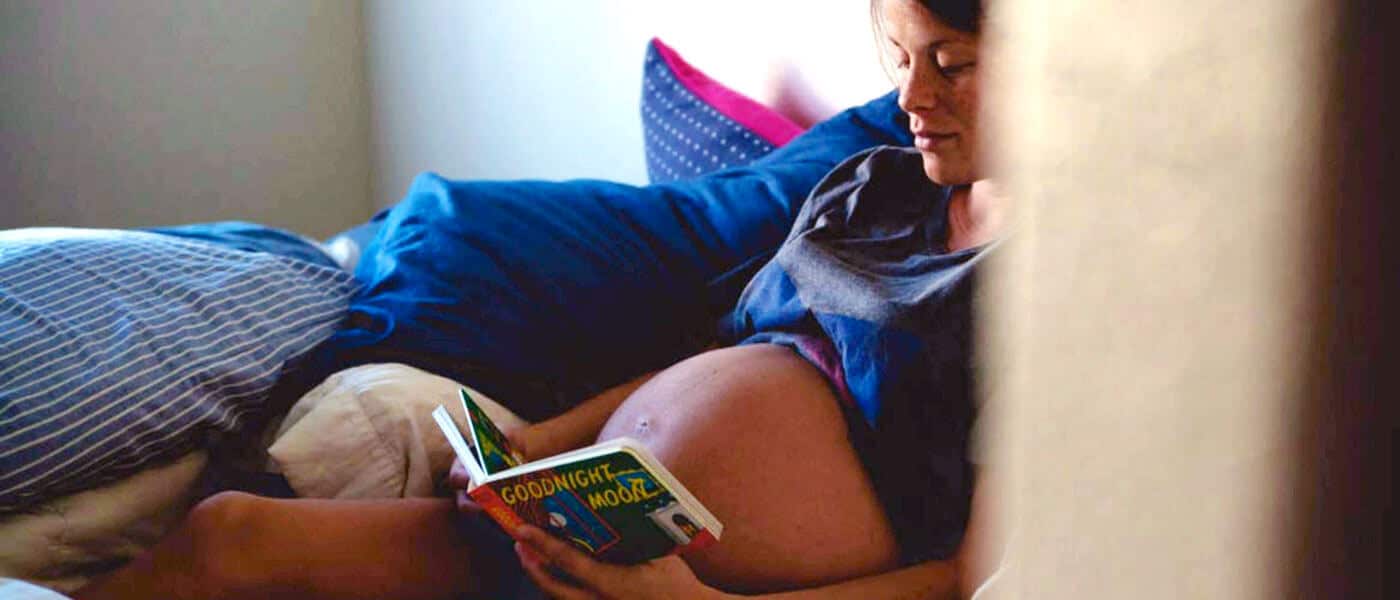
Don’t throw the birth plan out with the birth water!
Opinion + AnalysisHealth + WellbeingPolitics + Human Rights
BY Hannah Dahlen The Ethics Centre 2 AUG 2016
Just try mentioning ‘birth plans’ at a party and see what happens. Hannah Dahlen – a midwife’s perspective
Mia Freedman once wrote about a woman who asked what her plan was for her placenta. Freedman felt birth plans were “most useful when you set them on fire and use them to toast marshmallows”. She labelled people who make these plans as “birthzillas” more interested in birth than having a baby.
In response, Tara Moss argued:
The majority of Australian women choose to birth in hospital and all hospitals do not have the same protocols. It is easy to imagine they would, but they don’t, not from state to state and not even from hospital to hospital in the same city. Even individual health practitioners in the same facility sometimes do not follow the same protocols.
The debate
Why the controversy over a woman and her partner writing down what they would like to have done or not done during their birth? The debate seems not to be about the birth plan itself, but the issue of women taking control and ownership of their births and what happens to their bodies.
Some oppose birth plans on the basis that all experts should be trusted to have the best interests of both mother and baby in mind at all times. Others trust the mother as the person most concerned for her baby and believe women have the right to determine what happens to their bodies during this intimate, individual, and significant life event.
As a midwife of some 26 years, I wish we didn’t need birth plans. I wish our maternity system provided women with continuity of care so by the time a woman gave birth her care provider would fully know and support her well-informed wishes. Unfortunately, most women do not have access to continuity of care. They deal with shift changes, colliding philosophical frameworks, busy maternity units, and varying levels of skill and commitment from staff.
There are so many examples of interventions that are routine in maternity care but lack evidence they are necessary or are outright harmful. These include immediate clamping and cutting of the umbilical cord at birth, episiotomy, continuous electronic foetal monitoring, labouring or giving birth laying down and unnecessary caesareans. Other deeply personal choices such as the use of immersion in water for labour and birth or having a natural birth of the placenta are often not presented as options, or are refused when requested.
The birth plan is a chance to raise and discuss your wishes with your healthcare provider. It provides insight into areas of further conversation before labour begins.
I once had a woman make three birth plans when she found out her baby was in a breech presentation at 36 weeks. One for a vaginal breech birth, one for a cesarean, and one for a normal birth if the baby turned. The baby turned and the first two plans were ditched. But she had been through each scenario and carved out what was important for her.
Bashi Hazard – a legal perspective
Birth plans were introduced in the 1980s by childbirth educators to help women shape their preferences in labour and to communicate with their care providers. Women say preparing birth plans increases their knowledge and ability to make informed choices, empowers them, and promotes their sense of safety during childbirth. Some (including in Australia) report that their carefully laid plans are dismissed, overlooked, or ignored.
There appears to be some confusion about the legal status or standing of birth plans. Neither is reflective of international human rights principles or domestic law. The right to informed consent is a fundamental principle of medical ethics and human rights law and is particularly relevant to the provision of medical treatment. In addition, our common law starts from the premise that every human body is inviolate and cannot be subject to medical treatment without autonomous, informed consent.
Pregnant women are no exception to this human rights principle nor to the common law.
If you start from this legal and human rights premise, the authoritative status of a birth plan is very clear. It is the closest expression of informed consent that a woman can offer her caregiver prior to commencing labour. This is not to say she cannot change her mind but it is the premise from which treatment during labour or birth should begin.
Once you accept that a woman has the right to stipulate the terms of her treatment, the focus turns to any hostility and pushback from care providers to the preferences a woman has the right to assert in relation to her care.
Mothers report their birth plans are criticised or outright rejected on the basis that birth is “unpredictable”. There is no logic in this.
Care providers who understand the significance of the human and legal right to informed consent begin discussing a woman’s options in labour and birth with her as early as the first antenatal visit. These discussions are used to advise, inform, and obtain an understanding of the woman’s preferences in the event of various contingencies. They build the trust needed to allow the care provider to safely and respectfully support the woman through pregnancy and childbirth. Such discussions are the cornerstone of woman-centred maternity healthcare.
Human Rights in Childbirth
Reports received by Human Rights in Childbirth indicate that care provider pushback and hostility towards birth plans occurs most in facilities with fragmented care or where policies are elevated over women’s individual needs. Mothers report their birth plans are criticised or outright rejected on the basis that birth is “unpredictable”. There is no logic in this. If anything, greater planning would facilitate smoother outcomes in the event of unanticipated eventualities.
In truth, it is not the case that these care providers don’t have a birth plan. There is a birth plan – one driven purely by care providers and hospital protocols without discussion with the woman. This offends the legal and human rights of the woman concerned and has been identified as a systemic form of abuse and disrespect in childbirth, and as a subset of violence against women.
It is essential that women discuss and develop a birth plan with their care providers from the very first appointment. This is a precious opportunity to ascertain your care provider’s commitment to recognising and supporting your individual and diverse needs.
Gauge your care provider’s attitude to your questions as well as their responses. Expect to repeat those discussions until you are confident that your preferences will be supported. Be wary of care providers who are dismissive, vague or non-responsive. Most importantly, switch care providers if you have any concerns. The law is on your side. Use it.
Making a birth plan – some practical tips
- Talk it through with your lead care provider. They can discuss your plans and make sure you understand the implications of your choices.
- Make sure your support network know your plan so they can communicate your wishes.
- Attending antenatal classes will help you feel more informed. You’ll discover what is available and the evidence is behind your different options.
- Talk to other women about what has worked well for them, but remember your needs might be different.
- Remember you can change your mind at any point in the labour and birth. What you say is final, regardless of what the plan says.
- Try not to be adversarial in your language – you want people working with you, not against you. End the plan with something like “Thank you so much for helping make our birth special”.
- Stick to the important stuff.
Some tips on the specific content of your birth plan are available here.
Ethics in your inbox.
Get the latest inspiration, intelligence, events & more.
By signing up you agree to our privacy policy
You might be interested in…
Opinion + Analysis
Health + Wellbeing, Business + Leadership
The ethics of workplace drinks, when we’re collectively drinking less
Opinion + Analysis
Health + Wellbeing, Relationships
Duties of care: How to find balance in the care you give
Opinion + Analysis
Society + Culture, Politics + Human Rights
‘The Zone of Interest’ and the lengths we’ll go to ignore evil
Opinion + Analysis
Business + Leadership, Health + Wellbeing, Science + Technology
Can robots solve our aged care crisis?
BY Hannah Dahlen
Hannah Dahlen is a professor of Midwifery at Western Sydney University and a practising midwife.
BY The Ethics Centre
The Ethics Centre is a not-for-profit organisation developing innovative programs, services and experiences, designed to bring ethics to the centre of professional and personal life.
Ethics Explainer: Just War Theory

Just war theory is an ethical framework used to determine when it is permissible to go to war. It originated with Catholic moral theologians like Augustine of Hippo and Thomas Aquinas, though it has had a variety of different forms over time.
Today, just war theory is divided into three categories, each with its own set of ethical principles. The categories are jus ad bellum, jus in bello, and jus post bellum. These Latin terms translate roughly as ‘justice towards war’, ‘justice in war’, and ‘justice after war’.
Jus ad bellum
When political leaders are trying to decide whether to go to war or not, just war theory requires them to test their decision by applying several principles:
- Is it for a just cause?
This requires war only be used in response to serious wrongs. The most common example of just cause is self-defence, though coming to the defence of another innocent nation is also seen as a just cause by many (and perhaps the highest cause).
- Is it with the right intention?
This requires that war-time political leaders be solely motivated, at a personal level, by reasons that make a war just. For example, even if war is waged in defence of another innocent country, leaders cannot resort to war because it will assist their re-election campaign.
- Is it from a legitimate authority?
This demands war only be declared by leaders of a recognised political community and with the political requirements of that community.
- Does it have due proportionality?
This requires us to imagine what the world would look like if we either did or didn’t go to war. For a war to be ‘just’ the quality of the peace resulting from war needs to superior to what would have happened if no war had been fought. This also requires we have some probability of success in going to war – otherwise people will suffer and die needlessly.
- Is it the last resort?
This says we should explore all other reasonable options before going to war – negotiation, diplomacy, economic sanctions and so on.
Even if the principles of jus ad bellum are met, there are still ways a war can be unjust.
Jus in bello
These are the ethical principles that govern the way combatants conduct themselves in the ‘theatre of war’.
- Discrimination requires combatants only to attack legitimate targets. Civilians, medics and aid workers, for example, cannot be the deliberate targets of military attack. However, according the principle of double-effect, military attacks that kill some civilians as a side-effect may be permissible if they are both necessary and proportionate.
- Proportionality applies to both jus ad bellum and jus in bello. Jus in bello requires that in a particular operation, combatants do not use force or cause harm that exceeds strategic or ethical benefits. The general idea is that you should use the minimum amount of force necessary to achieve legitimate military aims and objectives.
- No intrinsically unethical means is a debated principle in just war theory. Some theorists believe there are actions which are always unjustified, whether or not they are used against enemy combatants or are proportionate to our goals. Torture, shooting to maim and biological weapons are commonly-used examples.
- ‘Following orders’ is not a defence as the war crime tribunals after the Second World War clearly established. Military personnel may not be legally or ethically excused for following illegal or unethical orders. Every person bearing arms is responsible for their conduct – not just their commanders.
Jus post bello
Once a war is completed, steps are necessary to transition from a state of war to a state of peace. Jus post bello is a new area of just war theory aimed at identifying principles for this period. Some of the principles that have been suggested (though there isn’t much consensus yet) are:
- Status quo ante bellum, a Latin term meaning ‘the way things were before war’ – basically rights, property and borders should be restored to how they were before war broke out. Some suggest this is a problem because those can be the exact conditions which led to war in the first place.
- Punishment for war crimes is a crucial step to re-installing a just system of governance. From political leaders down to combatants, any serious offences on either side of the conflict need to be brought to justice.
- Compensation of victims suggests that, as much as possible, the innocent victims of conflict be compensated for their losses (though some of the harms of war will be almost impossible to adequately compensate, such as the loss of family members).
- Peace treaties need to be fair and just to all parties, including those who are guilty for the war occurring.
Just war theory provides the basis for exercising ‘ethical restraint’ in war. Without restraint, philosopher Michael Ignatieff, argues there is no way to tell the difference between a ‘warrior’ and a ‘barbarian’.
Ethics in your inbox.
Get the latest inspiration, intelligence, events & more.
By signing up you agree to our privacy policy
You might be interested in…
Explainer
Politics + Human Rights
Ethics Explainer: Rights and Responsibilities
Opinion + Analysis
Politics + Human Rights
Where do ethics and politics meet?
Opinion + Analysis
Politics + Human Rights, Business + Leadership
Political promises and the problem of ‘dirty hands’
Opinion + Analysis
Politics + Human Rights, Relationships
Ask an ethicist: do teachers have the right to object to returning to school?
BY The Ethics Centre
The Ethics Centre is a not-for-profit organisation developing innovative programs, services and experiences, designed to bring ethics to the centre of professional and personal life.
Learning risk management from Harambe
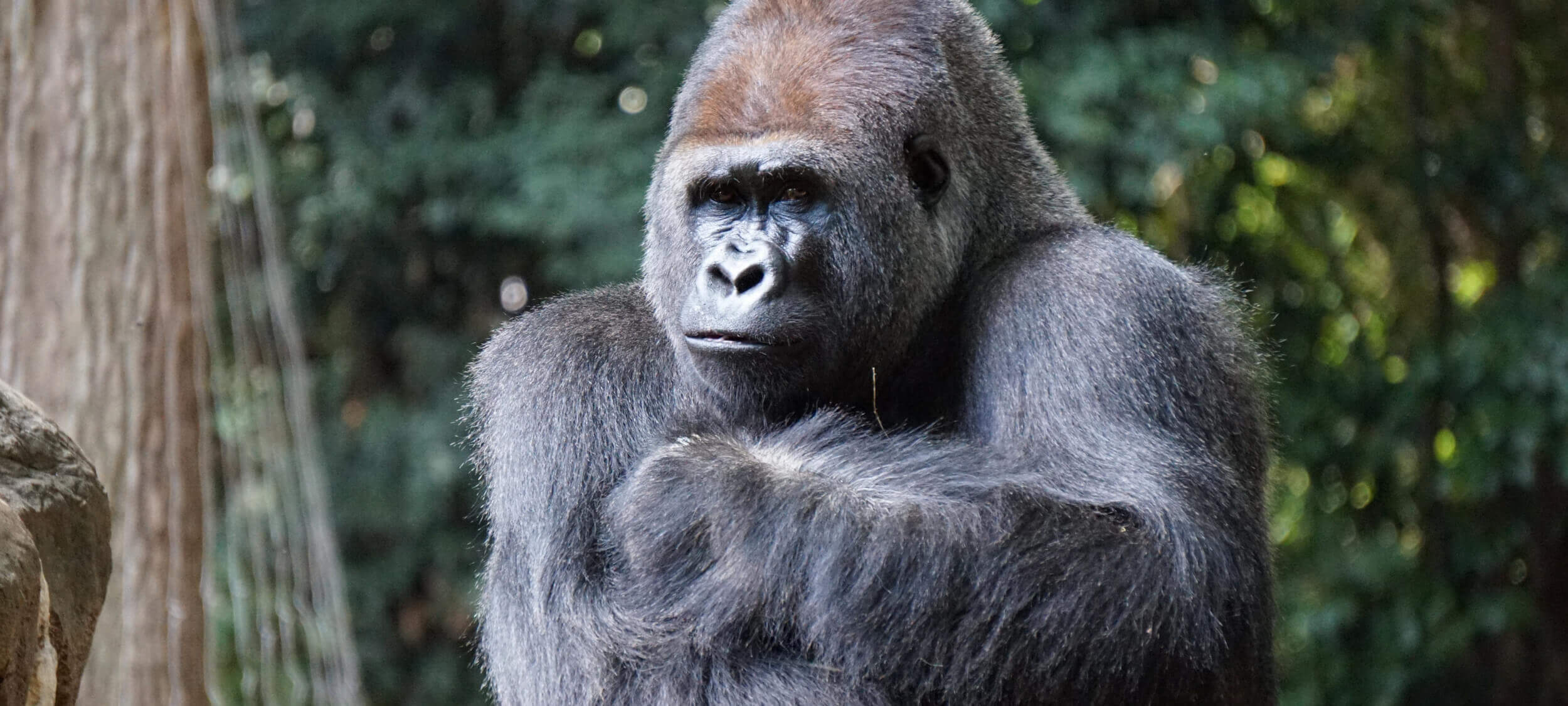
Learning risk management from Harambe
Opinion + AnalysisPolitics + Human Rights
BY Gav Schneider The Ethics Centre 2 JUN 2016
Traditional and social media channels were flooded with the story of Harambe, a 17-year-old western lowland silverback gorilla shot dead at Cincinnati Zoo on 28 May 2016 after a four-year-old boy crawled through a barrier and fell into his enclosure.
With the benefit of hindsight, forming an opinion is easy. There are already plenty being thrown around regarding the incident and who was to blame for the tragedy.
The need to kill Harambe is exceptionally depressing: a gorilla lost his life, the zoo lost a real asset, a mother was at risk of losing her child, and staff tasked by the zoo to shoot Harambe faced emotional trauma based on the bond they likely formed with him.
In technical risk management terms, the zoo seems to have been in line with best practice.
Overall, it was a bad state of affairs. Though the case gives rise to a number of ethical issues, one way to consider it is as a risk management issue – where it presents us with some important lessons that might prevent similar circumstances from happening in the future, and ensure they are better managed if they do.
In technical risk management terms, the zoo seems to have been in line with best practice.
According to Cincinnati Zoo’s annual report, 1.5 million visitors visited the park in 2014 to 2015. Included in those numbers are hundreds of parents who visited the zoo with children who didn’t end up in any of the animal enclosures.
According to WLWT-TV, this was the first breach at the zoo since its opening in 1978. There is no doubt the zoo identified this risk and managed it with secure (until now) enclosures. There is also little doubt relevant signage and duty of care reminders would have been placed around the zoo. Staff would assume parents would manage their children and keep them safe. In the eyes of most risk management experts, this would seem to be more than sufficient.
Organisations need to put energy and effort into so called ‘black swan’ events… that are unlikely but have immense consequences if they do occur.
However, as we have seen in several cases (including Cecil the Lion) it does not seem to be the incident itself that brings the massive negative consequences but rather social media, based on the fact that the internet provides a platform for everyone to be judge and jury.
This flags the massive shift required in the way we manage risk. If we look only at the financial losses to the zoo, their decision may seem logical and rational. They were truly put in a no-win position – an immediate tactical decision was required once Harambe began dragging the child around the water.
Imagine if they had decided to tranquillise Harambe and the four-year-old boy had died while they were waiting for the tranquillisers to take effect – what would the impact have been?
The true lesson regarding this issue lies in the need for organisations to put energy and effort into so-called ‘black swan’ events – ones that are unlikely but have immense consequences if they do occur. These events are often overlooked, based only on the fact they are unlikely, leaving organisations unprepared for when they do.
The ethics of what is right and wrong tend to blur when the masses have a platform to pass judgement.
Traditional risk management approaches try to allocate scores to things and then put associated resources to the highest ranking risk issues. In this case, a risk that was deemed managed actually occurred and the result was very negative.
Whether negligent or not, various social media commentators have held the mother accountable. It seems she has been held to account based not on what she did, but for the apparently unapologetic and callous way she responded to the killing of Harambe.
This shows us risk management needs to consider the human element in a way we previously haven’t. The ethics of what is right and wrong tend to blur when the masses have a platform to pass judgement. There are many lessons to be taken from this incident, including the following considerations:
- Risk management and duty of care should be incorporated in a more cohesive manner, focusing on applying a BDA approach (Before, During and After).
- Social media backlash adds a new dimension to the way organisations should make, report and defend their decisions.
- Individuals can no longer purely blame the organisation they believe responsible based on negligence or breach of duty of care. Even if the individual shifts blame onto the organisation entirely, and they are not held to account by the law, they will be held to account by the general public.
- We have entered an era where system- and process-based risk management needs to integrate human and emotive elements to account for emotional responses.
- Lastly – and unrelatedly – the question of why one story attracts massive public outcry and why another doesn’t raises ethical questions regarding the way we consume news, the way the media reports it, and the upsides and downsides of social media.
In short this is another case of how much work we still have to do – especially in the modern internet age – to proactively and ethically manage risk.
Ethics in your inbox.
Get the latest inspiration, intelligence, events & more.
By signing up you agree to our privacy policy
You might be interested in…
Opinion + Analysis
Politics + Human Rights
Ethics Explainer: Testimonial Injustice
Opinion + Analysis
Society + Culture, Politics + Human Rights
What happens when the progressive idea of cultural ‘safety’ turns on itself?
Opinion + Analysis
Politics + Human Rights
COP26: The choice of our lives
Opinion + Analysis
Business + Leadership, Politics + Human Rights, Society + Culture
Drawing a line on corruption: Operation eclipse submission
BY Gav Schneider
Dr Gav Schneider is the CEO of the Risk 2 Solution Group and Head of the Australian Catholic Universities Postgraduate Program in The Psychology of Risk.
BY The Ethics Centre
The Ethics Centre is a not-for-profit organisation developing innovative programs, services and experiences, designed to bring ethics to the centre of professional and personal life.
Ethics Explainer: Dirty Hands

Ethics Explainer: Dirty Hands
ExplainerBusiness + LeadershipPolitics + Human Rights
BY The Ethics Centre 29 MAR 2016
The problem of dirty hands refers to situations where a person is asked to violate their deepest held ethical principles for the sake of some greater good.
The problem of dirty hands is usually seen only as an issue for political leaders. Ordinary people are typically not responsible for serious enough decisions to justify getting their hands ‘dirty’. Imagine a political leader who refuses to do what is necessary to advance the common good – what would we think of them?
Michael Walzer steps in
This was the question philosopher Michael Walzer asked when he discussed dirty hands, and another philosopher, Max Weber, had asked before him.
Walzer asks us to imagine a politician who is elected in a country that has been devastated by civil war, and who campaigned on policies of peace, reconciliation and an opposition to torture. Immediately after this politician is elected, he is asked to authorise the torture of a terrorist. The terrorist has hidden bombs throughout apartments in the city which will explode in the next 24 hours. Should the politician authorise the torture in the hope the information provided by the terrorist might save lives?
Finding common ground
This is a pretty common ethical dilemma, and different ethical theories will give different answers. Deontologists will mostly refuse, taking the ‘absolutist’ position that torture is an attack on human dignity and therefore always wrong. Utilitarians will probably see the torture as the action leading to the best outcomes and argue it is the right course of action.
What makes dirty hands different is it treats each of these arguments seriously. It accepts torture might always be wrong, but also that the stakes are so high it might also be the right thing to do. So, the political leader might have a duty to do the wrong thing – but what they are required to do is still wrong. As Walzer says, “The notion of dirty hands derives from an effort to refuse ‘absolutism’ without denying the reality of the moral dilemma”.
The paradox of dirty hands – that the right thing to do is also wrong – poses a challenge to political leaders. Are they willing to accept the possibility they might have to get their hands dirty and be held responsible for it? Walzer believes the moral politician is one who has dirty hands, acknowledges it, and is destroyed by it (because of feelings of guilt, punishment and so on): “it is by his dirty hands that we know him”.
Note that we’re not talking about corruption here where politicians get their hands dirty for their own selfish reasons, like fraudulent reelection or profit. What we’re talking about is when a politician might be obliged to violate their deepest personal values or the ethical creeds of their community in order to achieve some higher good, and how the politician should feel about having done so.
A remorseful politician?
Walzer believes politicians should feel wracked with guilt and seek forgiveness (and even demand punishment) in response to having dirtied their hands. Other thinkers disagree, notably Niccolo Machiavelli. He was also aware political leaders would sometimes have to do ‘what’s necessary’ for the public good. But even if those actions would be rejected by private ethics, he didn’t think decision makers should feel guilty about it.
Machiavelli felt indecision, hesitation, or squeamishness in the face of doing what’s necessary wasn’t a sign of a good or virtuous political leader – it was a sign they weren’t cut out for the job. Under this notion, the good political leader won’t just accept getting their hands dirty, they’ll do it whenever necessary without batting an eyelid.
Ethics in your inbox.
Get the latest inspiration, intelligence, events & more.
By signing up you agree to our privacy policy
You might be interested in…
Explainer
Society + Culture, Politics + Human Rights
Ethics Explainer: Moral Courage
Opinion + Analysis
Politics + Human Rights
Did Australia’s lockdown leave certain parts of the population vulnerable?
Opinion + Analysis
Politics + Human Rights, Science + Technology
Is it right to edit the genes of an unborn child?
Opinion + Analysis
Business + Leadership
Ask the ethicist: Is it ok to tell a lie if the recipient is complicit?
BY The Ethics Centre
The Ethics Centre is a not-for-profit organisation developing innovative programs, services and experiences, designed to bring ethics to the centre of professional and personal life.
‘Eye in the Sky’ and drone warfare

‘Eye in the Sky’ and drone warfare
Opinion + AnalysisHealth + WellbeingPolitics + Human Rights
BY The Ethics Centre 18 MAR 2016
Warning – general plot spoilers to follow.
Collateral damage
Eye in the Sky begins as a joint British and US surveillance operation against known terrorists in Nairobi. During the operation, it becomes clear a terrorist attack is imminent, so the goals shift from surveillance to seek and destroy.
Moments before firing on the compound, drone pilots Steve Watts (Aaron Paul) and Carrie Gershon (Phoebe Fox) see a young girl setting up a bread stand near the target. Is her life acceptable collateral damage if her death saves many more people?
In military ethics, the question of collateral damage is a central point of discussion. The principle of ‘non-combatant immunity’ requires no civilian be intentionally targeted, but it doesn’t follow from this that all civilian casualties are unethical.
Most scholars and some Eye in the Sky characters, such as Colonel Katherine Powell (Helen Mirren), accept even foreseeable casualties can be justified under certain conditions – for instance, if the attack is necessary, the military benefits outweigh the negative side effects and all reasonable measures have been taken to avoid civilian casualties.
Risk-free warfare
The military and ethical advantages of drone strikes are obvious. By operating remotely, we prevent the risk of our military men and women being physically harmed. Drone strikes are also becoming increasingly precise and surveillance resources mean collateral damage can be minimised.
However, the damage radius of a missile strike drastically exceeds most infantry weapons – meaning the tools used by drones are often less discriminate than soldiers on the ground carrying rifles. If collateral damage is only justified when reasonable measures have been taken to reduce the risk to civilians, is drone warfare morally justified, or does it simply shift the risk away from our war fighters to the civilian population? The key question here is what counts as a reasonable measure – how much are we permitted to reduce the risk to our own troops?
Eye in the Sky forces us to confront the ethical complexity of war.
Reducing risk can also have consequences for the morale of soldiers. Christian Enemark, for example, suggests that drone warfare marks “the end of courage”. He wonders in what sense we can call drone pilots ‘warriors’ at all.
The risk-free nature of a drone strike means that he or she requires none of the courage that for millennia has distinguished the warrior from all other kinds of killers.
How then should drone operators be regarded? Are these grounded aviators merely technicians of death, at best deserving only admiration for their competent application of technical skills? If not, by what measure can they be reasonably compared to warriors?
Moral costs of killing
Throughout the film, military commanders Catherine Powell and Frank Benson (Alan Rickman) make a compelling consequentialist argument for killing the terrorists despite the fact it will kill the innocent girl. The suicide bombers, if allowed to escape, are likely to kill dozens of innocent people. If the cost of stopping them is one life, the ‘moral maths’ seems to check out.
Ultimately it is the pilot, Steve Watts, who has to take the shot. If he fires, it is by his hand a girl will die. This knowledge carries a serious ethical and psychological toll, even if he thinks it was the right thing to do.
There is evidence suggesting drone pilots suffer from Post Traumatic Stress Disorder (PTSD) and other forms of trauma at the same rates as pilots of manned aircraft. This can arise even if they haven’t killed any civilians. Drone pilots not only kill their targets, they observe them for weeks beforehand, coming to know their targets’ habits, families and communities. This means they humanise their targets in a way many manned pilots do not – and this too has psychological implications.
Who is responsible?
Modern military ethics insist all warriors have a moral obligation to refuse illegal or unethical orders. This sits in contrast to older approaches, by which soldiers had an absolute duty to obey. St Augustine, an early writer on the ethics of war, called soldiers “swords in the hand” of their commanders.
In a sense, drone pilots are treated in the same way. In Eye in the Sky, a huge number of senior decision-makers debate whether or not to take the shot. However, as Powell laments, “no one wants to take responsibility for pulling the trigger”. Who is responsible? The pilot who has to press the button? The highest authority in the ‘kill chain’? Or the terrorists for putting everyone in this position to begin with?
Ethics in your inbox.
Get the latest inspiration, intelligence, events & more.
By signing up you agree to our privacy policy
You might be interested in…
Opinion + Analysis
Climate + Environment, Health + Wellbeing, Society + Culture
Melbourne Cup: The Ethical Form Guide
Opinion + Analysis
Business + Leadership, Health + Wellbeing, Relationships
Moving on from the pandemic means letting go
Opinion + Analysis
Health + Wellbeing, Relationships
Want to live more ethically? Try these life hacks
Opinion + Analysis
Health + Wellbeing
Being a little bit better can make a huge difference to our mental health
BY The Ethics Centre
The Ethics Centre is a not-for-profit organisation developing innovative programs, services and experiences, designed to bring ethics to the centre of professional and personal life.
Do Australia’s adoption policies act in the best interests of children?

Do Australia’s adoption policies act in the best interests of children?
Opinion + AnalysisPolitics + Human RightsRelationships
BY Jane Hunt The Ethics Centre 14 MAR 2016
During the last year, I have listened and talked with practitioners, policy makers, adoptees, adoptive parents, children and young people in care, and birth families.
I have heard of the best and worst of human beings. My heart has constricted hearing about the profound harm some have experienced, and it has swelled in joy at the love that human beings can have for each other.
Research shows unequivocally that multiple placements have a negative impact on children.
Adoption in Australia has become fraught in all aspects – politics, policy and practice. It is a complex social issue that presents ethical and moral dilemmas for Government, the NGOs working with vulnerable and at-risk children, and for the broader community. It is complex and nuanced, with no clear response that will work in all cases. And it is highly emotionally charged.
In Australia, there are more than 43,000 children in ‘out of home care’. These children are identified as being ‘at risk’ and cannot remain in the care of their biological parents. They have been removed by child protection practitioners and, depending on the child’s circumstances, have been placed in the care of extended family, or with a guardian, or in short-term foster care.
Once children have been removed, the efforts of the child protection workers and other support services are framed to support the birth parents and to help them to reunify with their children. And this is where one of many ethical dilemmas emerges for the practitioners, policy makers and legislators.
How many opportunities should biological parents be given to demonstrate they are able keep their children safe and parent them? What level of support and services should they receive? And in the meantime, how long should a child stay in temporary care? How many placements is it tolerable for a child to experience?
These are difficult decisions for practitioners to make – each child’s situation is different. One practitioner described weighing up whether to return a child to their birth family against the risk of harm to the child as one of his hardest challenges. Having worked overseas, he believed that in Australia, the scales have tipped toward ‘restoration’ with birth families at all costs. This is not appropriately counter-balanced with an assessment of the risk of harm to children in the process.
Adoption in Australia has become fraught in all aspects – politics, policy and practice.
Compounding the situation is the problem of the availability and quality of foster carers able to care for vulnerable children. One practitioner in a regional town told me of a situation where she had to make a decision not to remove a child from a harmful situation because they did not have an appropriate foster carer available. The fact the child remained in an abusive family environment weighed heavily on the practitioner’s conscience.
Adoption, child protection and out of home care policy and legislation are founded on the assumption that decisions must be made in the ‘best interests of the child’. There is, however, no universally agreed upon definition of what this means.
Foster care is, by nature, temporary. There is always the possibility for the child that their relationship with their carers will end. This means some children experience multiple placements in foster care.
Sometimes the reasons for a change of placement are compelling – to be nearer their school, with siblings or nearer extended family members. However, research shows unequivocally that multiple placements have a negative impact on children.
Lack of security and attachment can have profound impacts on development. I’ve been told that multiple moves teach children that adults ‘come and go’ and cannot be trusted – a view corroborated by some young people in foster care who report feeling they ‘don’t belong’ anywhere.
Even the ‘Permanent Care Orders’ preferred in Victoria, which enable a child to live with a family until they are 18, fall short of providing a child or young person with the psychological and legal security of a family forever.
Why in Australia do we continue to provide a system that fails to meet children’s long term needs?
At the heart of this discussion lies a paralysing ethical dilemma – when a decision needs to be made to remove a child from their biological parents due to harm, neglect or abuse or when it’s not been successful, whose rights should be protected?
The right of the parent to keep their children, or the rights of the children to the conditions that will help them feel safe, secure and loved? Whose pain takes precedence? The parents’ loss and grief or the child’s trauma and pain?
The trauma caused by the historical practices of forced and closed adoptions has made many practitioners and politicians highly attuned to the needs of birth families. We need to learn from the profound hurt and trauma inflicted on many women who were coerced into relinquishing their children.
Adoption is not a panacea – it won’t be in the best interest of every child in long-term care.
The voices of adult adoptees who experienced secrecy, stigma and shame around their adoptions are deserving of understanding and compassion.
But considering or advocating for children to have access to adoption does not deny or ignore these experiences. It is important to learn from the impact of past practices and develop open adoption practices ensuring transparency and honesty for all involved, and provide support services that assist all parties involved in adoption.
It is also important to recognise that attempting to deal with an historical wrong – forced adoption – by loading the policy scales against adoption, creates a situation where everyone loses.
Adoption is not a panacea – it won’t be in the best interest of every child in long-term care, but it should be an option considered for all children that need permanent loving families. This then allows a decision to be made that is child focused and in their best interest.
There are many policy makers, practitioners, legislators, and families trying to acknowledge and navigate the ethical complexities of child protection, foster care and adoption. It is critical we continue in this direction, without being subsumed by the shame of our cultural past, to put the needs of vulnerable and at risk children first.
Ethics in your inbox.
Get the latest inspiration, intelligence, events & more.
By signing up you agree to our privacy policy
You might be interested in…
Opinion + Analysis
Politics + Human Rights
Time for Morrison’s ‘quiet Australians’ to roar
Opinion + Analysis
Relationships
In two minds: Why we need to embrace the good and bad in everything
Opinion + Analysis
Relationships
If you condemn homosexuals, are you betraying Jesus?
Opinion + Analysis
Politics + Human Rights
Farhad Jabar was a child – his death was an awful necessity
BY The Ethics Centre
The Ethics Centre is a not-for-profit organisation developing innovative programs, services and experiences, designed to bring ethics to the centre of professional and personal life.
Australia is no longer a human rights leader

Australia is no longer a human rights leader
Opinion + AnalysisBusiness + LeadershipPolitics + Human Rights
BY Georgie Bright The Ethics Centre 23 FEB 2016
On February 8, Prime Minister Malcolm Turnbull announced the appointment of Philip Ruddock – the former immigration minister who presided over the Howard government’s notorious “Pacific Solution” to divert asylum seekers from its shores – as Australia’s first special envoy for human rights.
This surprising recycling of Ruddock is part of the government’s campaign for a seat at the United Nations Human Rights Council for the 2018-2020 term.
Not too long ago, then Prime Minister Tony Abbott said Australia was “sick of being lectured to” by the United Nations. But even the new government is demonstrating a willingness to dismiss inconvenient human rights obligations. In Human Rights Watch’s annual World Report – which documents human rights practices in more than 90 countries – Australia’s human rights record over the last year showed how far the country has to go.
It is difficult not to be disillusioned by the state of human rights in Australia. This is especially the case regarding the treatment of migrants and asylum seekers, and the discrimination faced by Indigenous Australians.
Australia’s candidacy for a seat at the Human Rights Council provides an important opportunity for Australia to address its domestic human rights issues.
Australia’s position on refugee protection has been to undermine and ignore international standards rather than uphold them. The country maintains a harsh boat turn-back policy, returning migrants and asylum seekers to countries including Indonesia, Sri Lanka, and Vietnam after only the most cursory of screenings.
Australia has a policy of mandatory detention for all unauthorised arrivals, transferring migrants and asylum seekers to offshore processing sites in less-equipped countries such as Nauru and Papua New Guinea. An independent review and a report by the Australian Human Rights Commission found evidence of sexual and physical abuse of children on Nauru.
Instead of trying to ensure the safety of the asylum seekers and refugees in Australian immigration detention facilities, the government acted to limit public discussion of important refugee and migrant issues. It passed a law that makes it a crime punishable by two years jail if immigration service providers disclose “protected information”.
Following a ruling by the High Court, 267 asylum seekers in Australia, including 91 children, faced involuntary transfer to Nauru and Manus Island. The High Court ruled on narrow statutory grounds and did not consider Australia’s compliance with international refugee law.
Another area where Australia is falling behind is Indigenous rights. In November 2015, Australia appeared before the UN Human Rights Council to defend its rights record as part of the Universal Periodic Review process. Many countries urged Australia to address disadvantage and discrimination faced by Indigenous Australians. The government’s “Closing the Gap” report for 2016 highlighted mixed progress in meeting targets in education and health, with Indigenous Australians still living on average 10 years less than non-Indigenous Australians.
Indigenous Australians remain disproportionately represented in the criminal justice system, with Aboriginal women being the fastest growing prisoner demographic. Aboriginal and Torres Strait Islander children under the age of 18 are overrepresented in youth detention facilities—representing more than half of child detainees.
Australia’s candidacy for a seat at the Human Rights Council provides an important opportunity for Australia to address its domestic human rights issues.
Australia is a vibrant democracy with a multicultural society and a solid history of protecting and promoting human rights values. Following the horror of World War II, Australia played an integral role in the development of the United Nations. In 1948, Australia’s Dr Herbert Vere Evatt, as president of the General Assembly, oversaw the adoption of the Universal Declaration on Human Rights.
But to regain the moral high ground and respect international law, Australia should urgently address these and other shortcomings in its human rights record. For starters, the government should stop transferring migrants and asylum seekers offshore, and provide them with fair and timely refugee status determination in Australia.
On Indigenous rights, it needs to intensify its commitment to addressing the underlying causes of gaps in opportunities and outcomes in health, education, housing and employment between Indigenous and non-indigenous and do more to address the high incarceration rate.
Australia once was an international human rights leader – and should be again.
Ethics in your inbox.
Get the latest inspiration, intelligence, events & more.
By signing up you agree to our privacy policy
You might be interested in…
Opinion + Analysis
Business + Leadership
6 Things you might like to know about the rich
Reports
Business + Leadership
Managing Culture: A Good Practice Guide
Opinion + Analysis
Relationships, Politics + Human Rights
How to have a difficult conversation about war
Opinion + Analysis
Business + Leadership, Relationships
